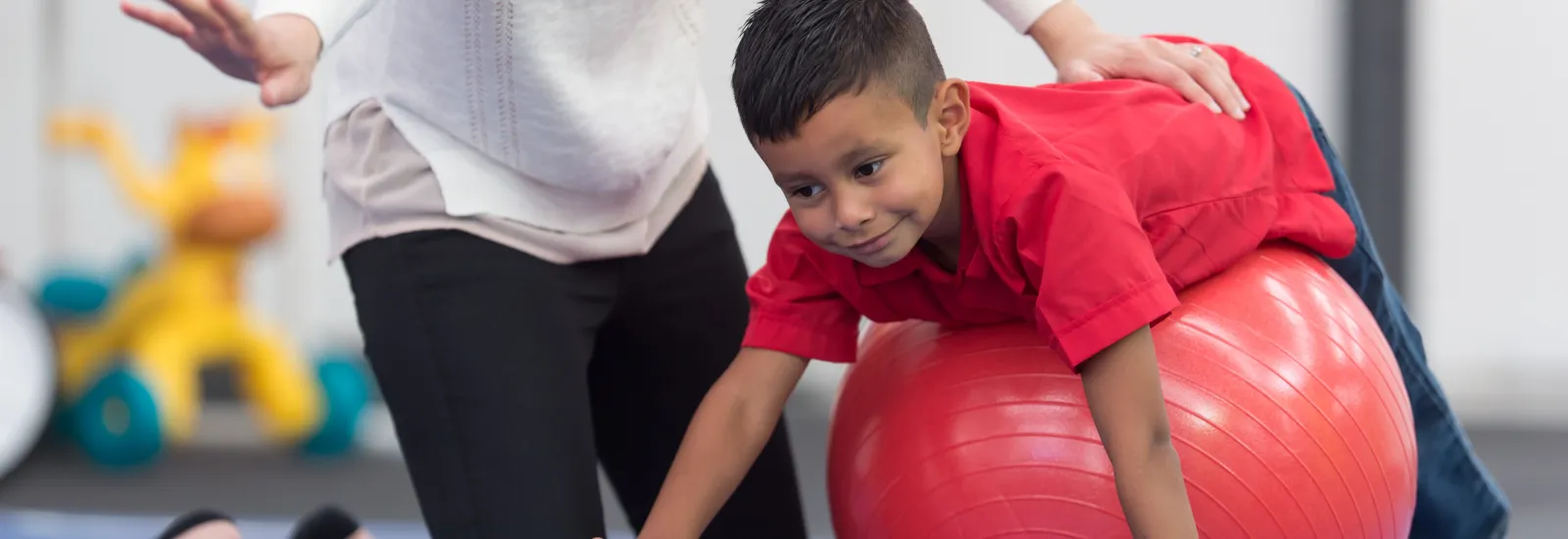
Pediatric physical therapy and your child
Parents want the best for
their children, and regularly visiting a pediatrician is a big part of making
sure they grow up healthy. Yet, some issues need more specialized care than
your pediatrician can offer, especially if your child needs help improving
strength and mobility. That's when pediatric physical therapy (PT) can help.
The goal of pediatric physical therapy
Physical therapy usually helps adults overcome injury or heal from surgery.
Pediatric physical therapists do the same for young patients, but physical
therapy services for children provide more
benefits.
With pediatric PT, the
goal isn't always to regain function. PT may help children gain function for
the first time, help children overcome a physical delay, or help improve a
child's quality of life when he or she has a congenital condition (a condition
present at birth).
With pediatric PT, the
goal of therapy is as unique as the child. PT depends on the child's specific
needs, but ultimately, it helps children gain as much movement and mobility as
possible so they can better perform tasks of
daily living. Based on your child's needs, a therapist may prescribe PT to:
●
Improve gross motor
function.
Motor function is the ability to make big movements on purpose. If your child
needs help moving arms or legs, gross motor training helps.
●
Increase balance,
strength, and coordination. Various conditions make these tasks difficult. PT empowers
children to walk, increase coordination, and perform other movement-based
activities.
●
Teach motor planning. Motor planning is
understanding and performing the steps for physical tasks such as kicking a
ball. Although many take this skill for granted, others need help learning it
through pediatric PT.
Pediatric physical therapy services
Children in PT have
wide-ranging needs. Some children need help developing muscle tone. Others need
help managing pain. And others need a combination of services.
It all starts with an
evaluation. This allows the therapist to view a child's status firsthand.
Therapists then get to work, helping children increase function and more.
Some of the services
provided during PT include:
- Ambulation training to increase mobility or correct improper gait or walking technique
- Aquatic therapy
- Biofeedback and electrical stimulation
- Evaluation and treatment of orthopedic issues
- Fitness training to increase muscle tone, flexibility, and strength
- Neck strengthening for children with torticollis
- Recovery and pain relief from trauma, fracture, or surgery
- Training to use braces and adaptive equipment
- Wheelchair and orthotic clinics
To help children
progress, pediatric physical therapists also work with parents. Therapists
teach parents exercises they can do at home. They also educate parents on
safety and injury prevention.
Why children need pediatric physical therapy
There are many reasons a
child could benefit from pediatric PT.
Pediatric PT can help
with the following conditions:
- Autism, if the condition causes mobility issues
- Cerebral palsy
- Gait or other walking difficulties
- Concussion or another head injury
- Fetal alcohol spectrum disorder
- Leukemia
- Muscular dystrophy
- Obesity
- Sports-related or other physical trauma
- Spina bifida
- Toe walking
- Torticollis
A child-friendly approach
Providing PT to children
requires a special touch. Therapists must take special care to know their
patients and treat them in ways they appreciate. This means being kind and
using words children understand. It also means having the right tools and
techniques.
Autism and other
conditions can make
communication difficult for young patients. When children can't speak clearly, this presents a challenge
in their care. Physical therapists use child-friendly language and work closely
with the patient and parent, as well as the speech therapist when they are
involved in the child's care, to make sure they are communicating in ways the
patient can understand.
Communication isn't the
only obstacle to pediatric PT. Sometimes, even the most communicative children
don't want to go to therapy. After all, it can be demanding, and there are more
fun things to do. Physical therapists know this and work hard to make therapy
enjoyable. They encourage children along the way, so they'll want to continue.
Additionally, pediatric physical therapists use play as part of therapy when
possible.
As a result, young patients listen to their therapists and follow their instructions. Over time, they make progress. Once they reach their milestones, they continue to push ahead. This leads to maximum growth, function, and development.
Reid Health is home to
the region's largest freestanding pediatric therapy facility, offering
pediatric physical, occupational, and speech therapy under one roof. Learn more about our
children's therapy offerings.

